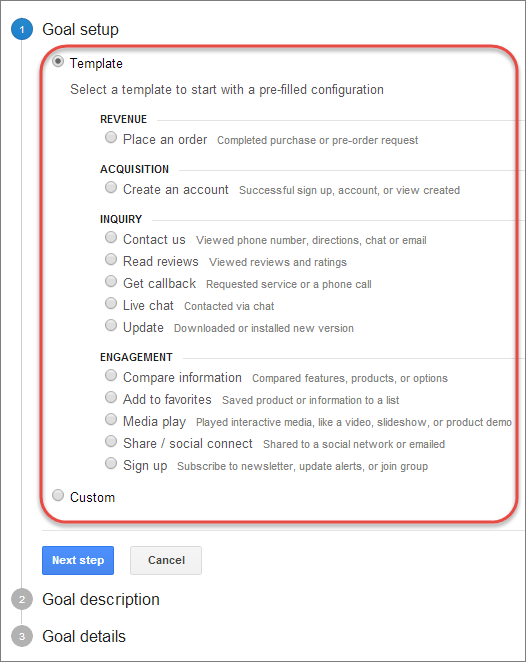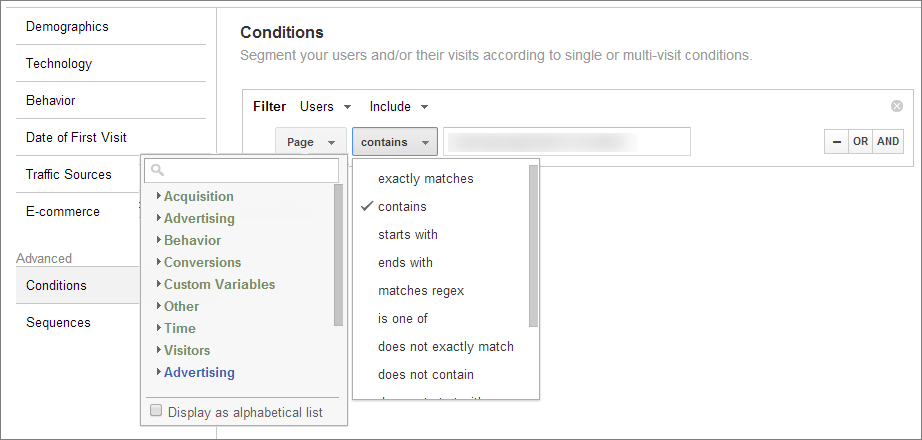Conversion Is King
Website conversion rates are the Key Performance Indicators (KPIs) that a business uses to measure the success of their web properties. The conversions to which we pay the most attention are called macro conversions. Site owners can track one or more macro conversions that are directly tied to the primary purpose of the site.
If your site is focused on selling items, then completed purchases are a macro conversion on your site. If you collect leads for sales, then submitted lead forms are a macro conversion. If the purpose of your site is to encourage people to attend an event, then completed registrations are a macro conversion.
Most Traffic Does Not Result in a Macro Conversion
Generally, only a small fraction of site visitors complete a macro conversion. For example, the conversion rate of most ecommerce sites hovers around 3%. But, many more users than that interact with the pages and features of your site. It’s not true that all the remaining 97% of visits are totally worthless and should be thrown into one big bucket for analytics purposes.
When setting up experiments (e.g., A/B split tests, multivariate tests) and reviewing web analytics data, it’s imperative to consider not just the macro conversions, but other types of interactions that we refer to as micro conversions. Micro conversions help you measure the impact of incremental user-experience improvements. Often, the effect of individual small changes cannot be detected at the macro-conversion level. But just because those changes didn’t increase the macro conversion rate, doesn’t mean they weren’t beneficial: many small improvements combine to reduce obstacles, improve attractiveness, and bring more value to your business.
Two Types of Micro Conversions
- Process Milestones are conversions that represent linear movement toward a primary macro conversion. Monitoring these will help you define the steps where UX improvements are most needed.
- Secondary Actions are not the primary goals of the site, but they are desirable actions that are indicators of potential future macro conversions.
Process Milestones
If you are running experiments to test design changes within steps of a process or a linear interaction, looking for statistically significant changes in macro-conversion rates can be fruitless and can lead to discarding good design ideas. In an environment where users undertake multiple actions to eventually reach a macro-conversion event, there are many junctions at which the design can be improved. Micro conversions help identify where UX improvements are most needed. They also help us determine if UX changes are having the desired impact.
Example:
Prezi is a web-based presentation platform. Their macro-conversion event is when a subscriber presents a Prezi slide show that they have made. There are many steps a user will go through before getting to that point: signing up for an account, viewing a tutorial, starting their own presentation, making edits, saving a presentation, sharing a presentation.
If the design team tests a design solution to help a new user get started more quickly, that solution may not significantly impact the macro conversion rate (which is related to presenting a finished presentation). But, ideally, the team would see a change in how many new users start a presentation and how soon after they open an account they do that. These events are micro conversions that feed into the primary macro-conversion rate.
Secondary Actions
Macro conversions that require significant user commitment are often preceded by a series of desirable actions that build trust and preference over time and across sessions. One or more of these actions may predict future macro conversions.
Types of secondary actions:
- Subscribed to newsletters, alerts, or updates
- Shared content
- Posted a comment
- Viewed a particular number of article pages
- Followed a topic
- Watched a video
Measuring Micro Conversions
All macro and micro conversions can be measured in Google Analytics by establishing Goals for each. Goal setup is accomplished in the Admin section of your Google Analytics account.

Visit the Admin section to set up “goals” to represent your macro and micro conversions.
The system provides templates for several common goal types or you can set up a custom goal.

Google Analytics provides goal templates to aid in set up. Other analytics solutions may employ different terminology but should still allow you to define ways to record similar micro conversion events.
Use Goal Funnels for Process Milestones
Goal funnels can be set up in the admin area of the Google Analytics to define a specific sequence of pages through which users must pass on their way to a macro conversion. This data is represented in the Funnel Visualizations reports in the Conversion category of Google Analytics.

Goal Funnels define a sequence of pages that users ideally move through on their way to completing a macro conversion.
Define Segments to Measure Across Sessions
The drawback of Goals measurement is that it is limited to session-specific funnels — it doesn’t measure any users who take multiple sessions to move through a funnel. (Especially for B2B sites, it’s normal for people to need many site visits to move through the awareness, research, consideration, and decision stages — each of which can have several micro conversions.) To get that level of detail, you should use Segmentation.

When defining segments, you can choose whether the conditions must be specific to a session (Visits) or can apply across multiple sessions (Users).

Conditions definition for secondary conversions allows for very detailed specifications to cover how users arrived at the site, what they saw, what they did, who they were, and when they took specific actions.

Sequences can be defined to track visitors who travel specific paths.
Micro Conversions Are About the Long View
Micro conversions provide essential visibility into the holistic user experience. Focusing solely on macro-conversion measurement risks adopting only design and content changes that result in instant, large shifts in conversion rate. These shifts are often short lived. Sites that optimize for long-term returns need to focus on all the components that provide a positive user experience and business return over time.




